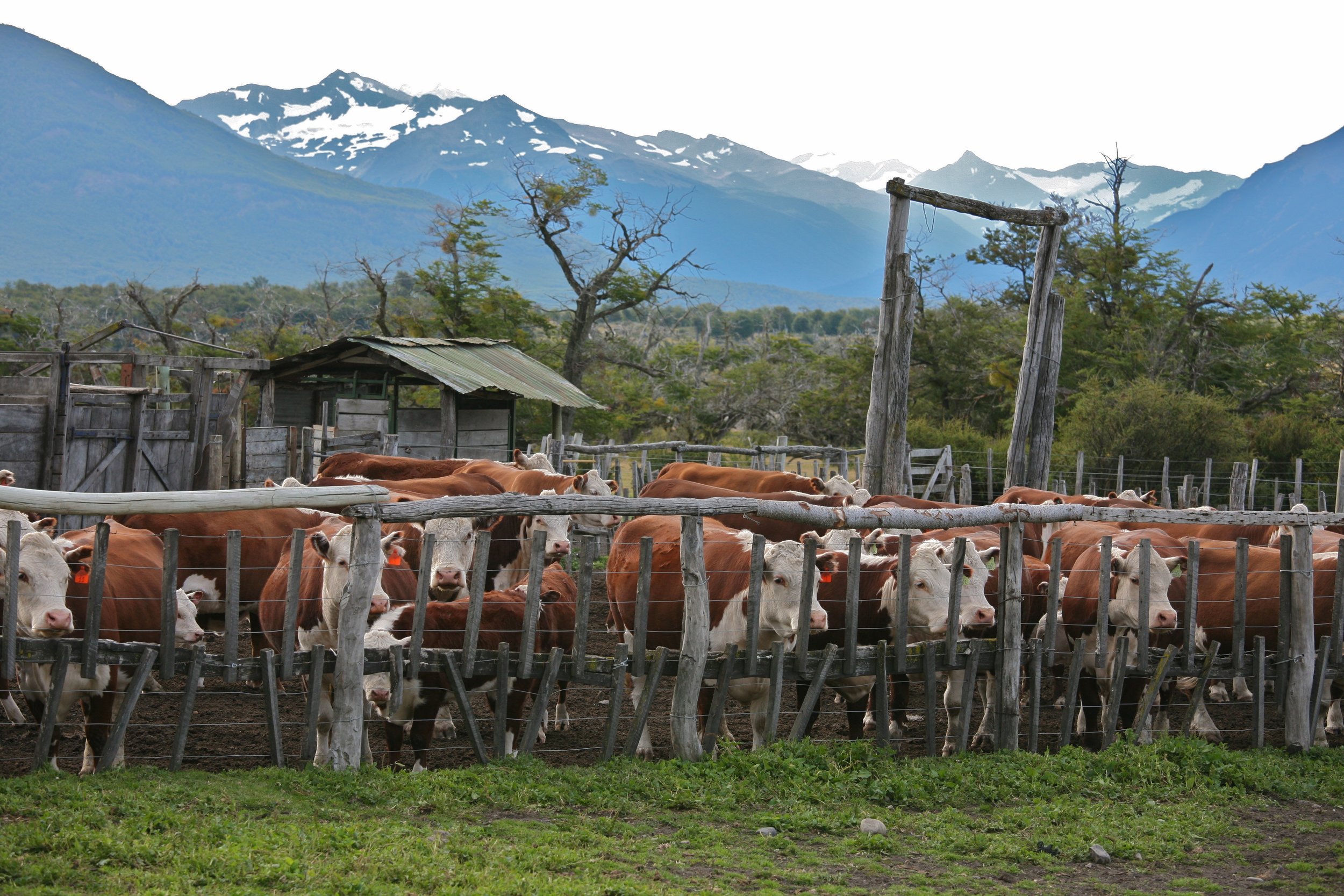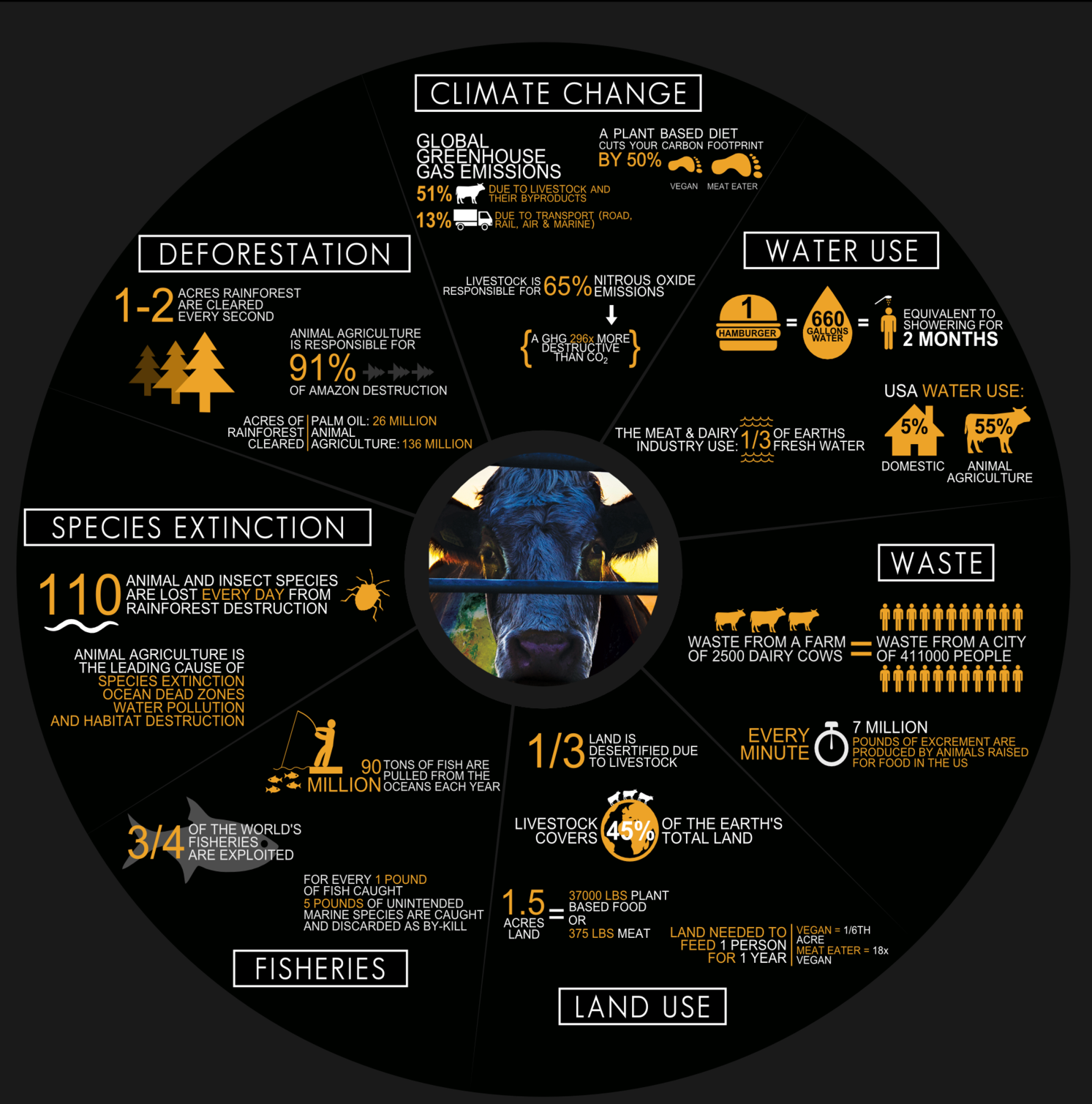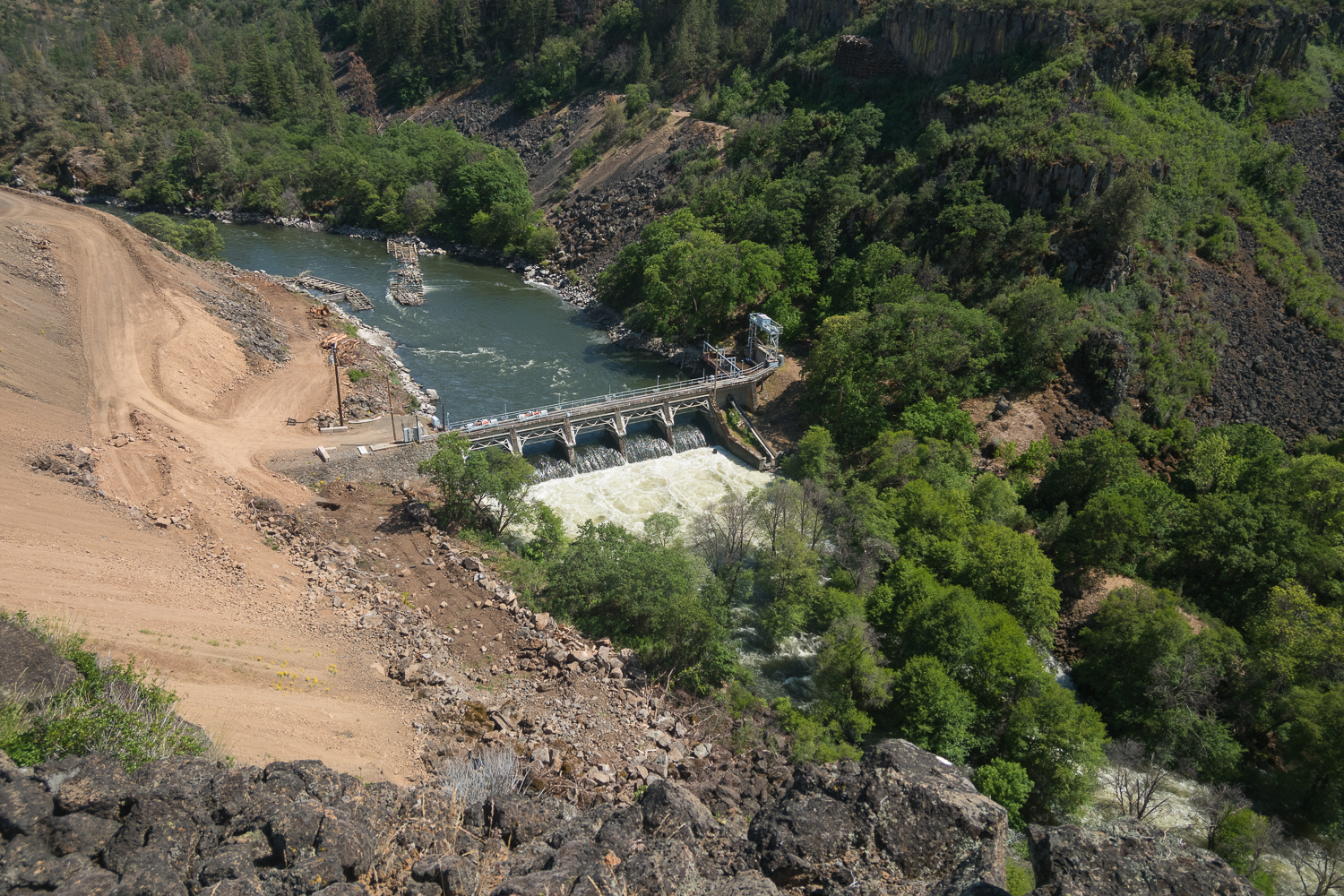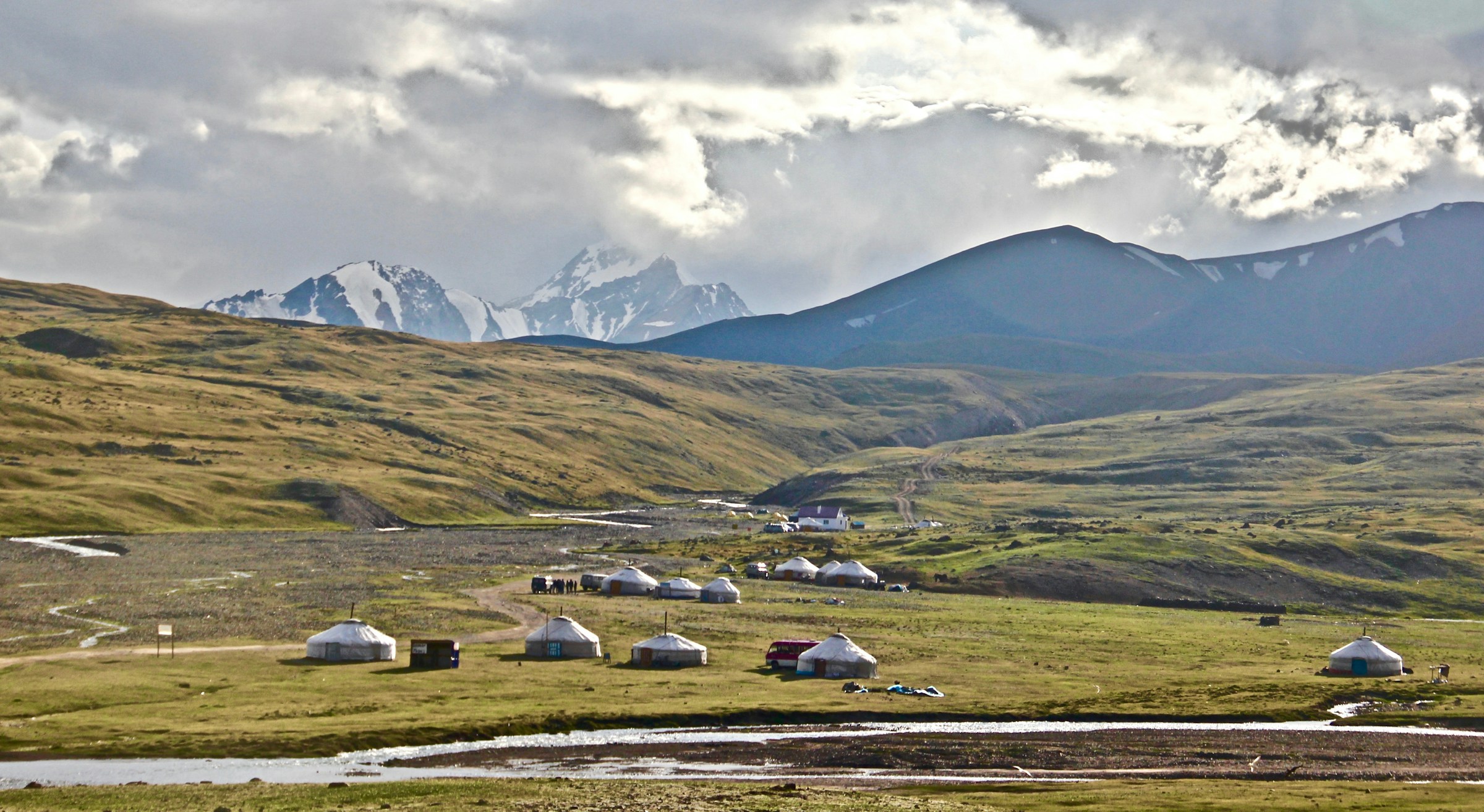PICTURED: Nibepo – Aike Ranch, El Calafate, Argentina. Photo Credit Alex Proimos CC 2.0.
“A decrease equivalent to the full 49% of greenhouse gases attributed to animals was not realized because of the need to synthesize fertilizers to replace animal manures, […] and produce additional crops on land previously used by animals”.
“Assuming agricultural emissions account for 9% of total US emissions, […] eliminating animal agriculture would decrease total US emissions by an estimated 2.6%”. (1)
2.6 percent could hardly be representative of the beef-powered prophecy of doom hanging over our heads that so many documentaries, journals, and vegan acquaintances frequently remind us about.
As the introduction to Clearing the Air: Livestock’s Contribution to Climate Change reads, “The [UN FAO] report’s statement that livestock production is responsible for a greater proportion of anthropogenic emissions than the entire global transportation sector is frequently quoted in the public press”.
More emissions than the entire global transportation sector is a tremendous claim. Imagine the CO2 of every car, plane, bus, and tanker on earth totaling less than what cows belch out in a field, it’s a miracle we’re not all vegan by now.
However, according to Clearing the Air, the EPA, and White and Hall (2017), this is a grossly misguided assessment based on poor modeling, inaccurate data, and a disregard for the nuances of what the animal-agriculture system does for this country.
Inaccurate Data, Poor Modelling
According to an article by Frank Mitloehner, professor and air quality specialist at the University of California – Davis, and the former chairman of LEAP, a global United Nations Food and Agriculture Organization (FAO) partnership project to benchmark the environmental footprint of livestock production, several notable films and articles regarding the environmental impact of animal ag are little more than propaganda.
“In an effort to present animal agriculture as the most fearful threat to our environment, the World Watch Institute and producers Kip Andersen and Keegan Kuhn […] made the claim that animal agriculture is responsible for a staggering 51 percent of greenhouse gas (GHG) emissions worldwide, more than any other source, including transportation,” says Frank on his blog.
If this sounds familiar, it’s because it came from the UN FAO report titled Livestock’s Long Shadow, as detailed above. These days, as Frank puts it, “Andersen and Keegan are much closer to the truth, having tweeted and posted that 18 percent of GHGs are from global animal agriculture on their website, cowspiracy.com.”
51% down to 18% should be regarded as quite an admission of fault, however even 18% of all global emissions is far from accurate, since the authors of Livestock’s Long Shadow have since released another piece titled Tackling Climate Change Through Livestock which reports that “14.5% of all human-induced emissions” come from livestock.
One of the recurring themes in examining the environmental impacts of animal agriculture is how researchers attribute GHG emissions. There’s a massive, unfair discrepancy here that’s just not being addressed, and that is the apples to oranges comparison of life-cycle assessments, i.e. direct and indirect effect assessments, with merely direct assessments.
PICTURED: The Cowspiracy infographic, still touting false information even though their own sources have drastically changed their estimates.
Apples to Oranges
The point of this story is not to repeatedly dismantle the credibility of an independent film, but Cowspiracy reveals two very key points in the discussion over the environmental impacts of animal ag. The Cowspiracy Twitter account, tweeted on Sep 1st 2018 that 18% of global emissions are due to livestock, and that that total is greater than transportation.
That same day, Cowspiracy tweeted an infographic (which is still present on their website) claiming that 51% or more of all global GHGs come from animal ag.
This dishonestly is perfectly summed up by the unilateral use of life-cycle assessments to measure climate impact. the FAO paper which has been so pervasive in not just Cowspiracy, but much of the journalism on this topic, including pieces published by Fox News, the LA Times, and the NY Times, all relied on the report which used a life-cycle assessment to measure the impact of livestock.
What this means is that every ounce of CO2 and methane (CH4) and presumably nitrous oxide is accounted for – not just from the entire cradle to grave lifespan of the cow, but indirect emissions as well.
This means the emissions of every vehicle and facility used to house, transport, or that exists to otherwise support cattle, along with the footprint of manure production, water use, deforestation to make way for pasture land, and more besides are all added together with the CH4 produced in the stomachs of ruminant animals to create a figure for GHG emissions.
On the other side of the issue, this thoroughness was not used to determine transportation GHG emissions. So imagine the expansive inclusivity of all sources both direct and indirect for an emissions life-cycle assessment in the transportation sector, and any notion that agriculture and transportation can be compared is swept away.
That would include all the emissions produced not just from the tailpipes of cars or the turbines of engines, but in the facilities used to manufacture them, all the manufacturing which produces the raw materials like steel and aluminum needed to do so, and all the emissions as a result of shipping parts and cars around world would have to be included.
Not only is the transportation sector about vehicles, but of the infrastructure needed to operate all those vehicles. All the cement, asphalt and other materials required to create roads, bridges, and runways, and all the plants needed to manufacture the materials to build the machines that create them, and the plants which create those machines need to go on the balance sheet as well.
The United States EPA executive summary 1990-2016 of emissions confirms as such, as anyone can go and see that transportation produces 1,782.6 million metric tonnes (MMT) of CO2 or tonnage equivalent in CO2, while agriculture comes in at 237.8 MMT if you combine manure management and enteric fermentation (the CH4 producing aspect of livestock).
Not all GHGs are Created Equal
One of the reasons GHGs from livestock are considered such a threat is that they are mostly methane (CH4) rather than CO2. Based on the Intergovernmental Panel on Climate Change’s (IPCC) global-warming potential (GWP) score of various GHGs, CH4 has 25-times more GWP than carbon dioxide.
However in the atmosphere, the time it takes for CH4 to lose all of its GWP is about 12 years according to the EPA and the IPCC. CH4 from livestock represents only a quarter of the United States’ CH4 emissions.
CO2 on the other hand, because the process of removing it from the atmosphere is part of a cyclical procedure, the GWP of CO2 remains in the atmosphere for centuries.
And while it’s true that methane carries a 25-fold greater GWP than carbon dioxide, the presence of it in the United States needs to be looked at in context.
According to the EPA, the last 250 years has seen a 163% increase in methane emissions in the United States, equivalent to 0.6% a year in growth. Even considering the massive growth in the nation’s population and the increase in meat consumption during that time, the CH4 emissions from ruminant animals between 1990 and 2016 have slowed considerably, adding only 6 MMT during those 26 years, bringing the growth down to about 0.2 per year.
Today, 81.6% of all GHG emissions in the United States, according to the EPA, are from CO2. Only 10% is methane, a quarter of that methane is from cows – equaling a mere 2.52% out of 100.
However there’s another lense with which to analysis this growth in CH4, one that plays an important part in the American story.
The Great Plains
Today the American beef industry has about 90 million head of cattle. Since the EPA’s methane emissions assessment starts 250 years ago, one has to acknowledge that alongside the rise in the numbers of beef cattle in the United States, was a plummeting in the numbers of bison bison, a large, grazing ruminant that causes enteric fermentation and thus CH4 emissions, from between 30-60 million animals to less than a thousand.
Those animals are gone, and the methane they belched out has long since departed the atmosphere. Furthermore, the lifespan of a bison is roughly the lifespan of a particle of CH4 in the atmosphere, meaning that as long as the American beef and dairy herds are kept roughly the same size there’s no additional CH4 reaching the atmosphere.
It’s possible even, through the advances in technology, that we can reduce the amount of cattle alive in the country at any given time. According to Dr. Mitloehner, in 1950, there were 25 million head of dairy cattle in the United States.
Remarkably, today there are only 9 million dairy cows – yet we produce 60% more milk than we did in 1950, with 16 million fewer animals.
This conversation will likely go on across the duration of this century and beyond. It is deeply irresponsible to present the arguments in Livestock’s Long Shadow, Cowspiracy, Tackling Climate Change Through Livestock, or any production which sources these data, because they are houses built on flawed foundations.
To achieve fewer emissions in animal agriculture, the conversation should be built on a totally different basis – one that acknowledges that there is an impact of animal husbandry, but one that also understands that the importance of ruminant animal products and production in our economy outweighs that impact, and that other sources of emissions should be addressed long before you start snatching steaks off American menus.
Continue exploring this topic — The Future Of Food Security In America Is Not In Sustainability, But In Regeneration





